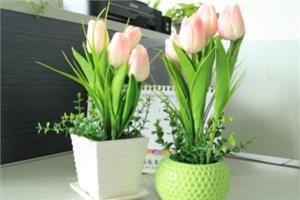The cause and solution of the loss of leaves in Rubber trees for 8 months
Rubber tree is a kind of potted plant with luxuriant leaves. Some people do not know how to maintain the leaves when they are raising rubber trees. The following editor will take you to understand the causes and solutions of the loss of leaves in rubber trees for 8 months.
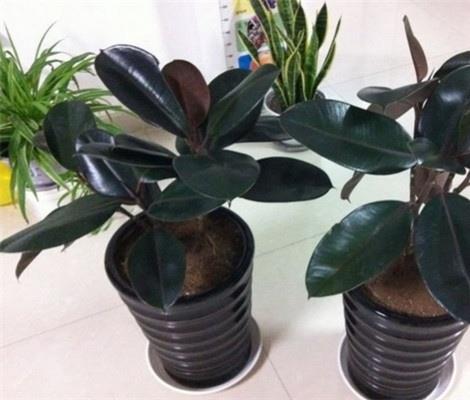
1. Soil consolidation caused by failure to change the basin for a long time
[cause] at the initial stage of rubber tree growth, the basin needs to be changed once a year, and the basin diameter is larger every year. After growing for 6 to 8 years, the basin can be changed every three years. If the basin is not changed for a long time, the basin soil will be seriously hardened and the soil ventilation will be poor. The fibrous root of the rubber tree suffocated and necrosed, unable to absorb water and nutrients, and caused the withered and yellow leaves of the plant.
[solution] when the temperature reaches more than 15 degrees, turn the basin, cut off the dead roots and shake off most of the persistent soil. Remove the yellowed leaves, cut the stem properly, replace the original consolidated basin soil with fresh and fertile culture soil, and often keep the soil moist, which can promote the re-emergence of new roots, restore health, and grow into multi-branched plants. In the future maintenance, it is necessary to keep the basin soil permeable and loosen the basin soil every 15 to 20 days while keeping the basin soil moderately moist, so as to avoid rotting roots or root atrophy caused by repeated watering.
Second, no fertilization for a long time
[cause] Rubber trees like to be fat and flooded. Not applying fertilizer for a long time will lead to malnutrition and yellowing of leaves.
[solution] when changing the basin, an appropriate amount of base fertilizer was added to remove yellow leaves, and then liquid fertilizer was applied every half month, mainly phosphorus and potash fertilizer.
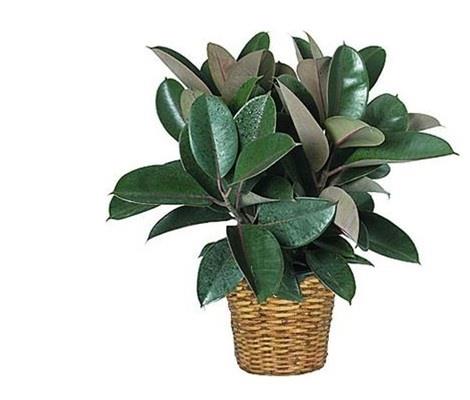
Third, the winter temperature is on the low side
[cause] the lowest adaptive temperature of rubber tree is more than 6-8 degrees. If the room temperature is less than 5 degrees in winter, the withered and yellow leaves will occur.
[solution] to increase the room temperature through the winter, be sure to keep it above 6-8 degrees.
IV. Watering or fertilizing too much
[cause] although the rubber tree is a water-loving and fertilizer-loving plant, if it is watered and fertilized too much, especially from August to September, when the weather is still muggy, too much water is watered and stagnant water is formed in the basin, or too much water is watered during the overwintering period. and the plant is in the dormant period, the transpiration decreases, and the water in the basin can not be discharged in time. Or mistakenly irrigated raw fertilizer, big fertilizer, thick fertilizer, will cause rotting roots due to water and fertilizer damage, resulting in withered and yellow leaves. If the rotten root is caused by fertilizer damage, the root will be accompanied by an unpleasant smell.
[solution] first cut off the rotten root system until the wound section is fresh and white milk exudates. Slightly spread to dry the wound milk, or smear sulfur powder on the wound, or wipe it with clean plant ash and charcoal shavings, and cut off part of the branches at the same time, so as to reduce the transpiration consumption of water, and then plant in a different pot. When replanting, it is appropriate to choose clean and slightly moist fine sand to surround the root wound, and the outside should be planted with fresh and loose sandy soil, strengthen shading and spray management, basin soil is not dry and no longer watering; as long as the plant root system is not too seriously damaged, a new tender fibrous root can be produced at the wound of the root system after a month. After maintenance, often keep the basin soil slightly moist, do not over-watering, can spray water to the leaf surface in the morning and evening.
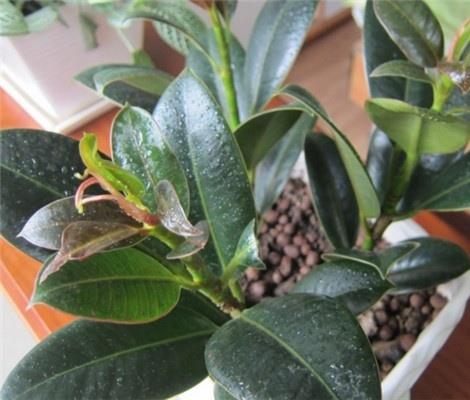
5. Lack of moisture
[cause] because the indoor air is too dry, the water in the basin soil is not enough to supply the transpiration of all the leaves, resulting in the yellowing and even shedding of some leaves, especially the old leaves in the lower part.
[solution] check the wetting degree of the basin soil from time to time, replenish water in time, spray water to the leaf surface every morning and evening, and if it is still insufficient, spray water to the leaf surface again around noon. Note: the water temperature of watering and spraying should be basically the same as that of soil greenhouse. If the water temperature of watering and spraying differs greatly from soil temperature and air temperature, it is easy to lead to adverse physiological reactions.
VI. Poor indoor ventilation
[cause] if the room is not ventilated for a long time, some harmful gases, such as high carbon dioxide concentration, will also occur.
[solution] it can be improved by opening windows in time and keeping indoor ventilation and fresh air. In winter, doors and windows can be opened at noon when the temperature is higher to change the indoor air.
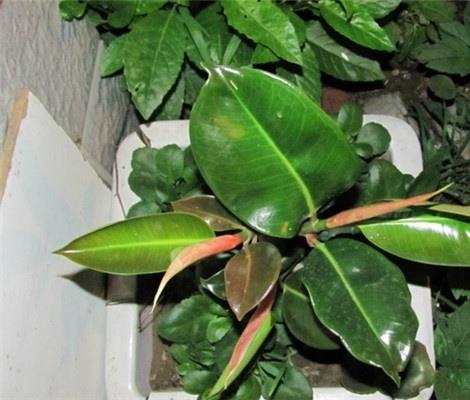
7. Shading for a long time
[cause] Rubber tree is a tropical tree species, like plenty of sunshine, not resistant to shade, if you do not see the sun indoors for a long time, there will also be yellow leaves.
[solution] put the plant in a sunlit place.
May be infected with Botrytis cinerea
[cause] Botrytis cinerea is a kind of fungal ☆ prohibited ☆ disease which is common and difficult to control in open field and protected crops. it is a disease of low temperature and high humidity. The high incidence period of the disease is when the growth temperature of pathogen is 20: 30 ℃, the temperature is 20: 25 ℃ and the humidity is more than 90%.
[solution] diseased leaves should be picked and burned in time. Increase indoor light and increase room temperature. Or use 50% nonglidine (ethylene sclerotium) wettable powder 1200 times liquid, or 40% chlorothalonil wettable powder 600 times liquid, alternately spraying, 7 to 10 days once, continuous spraying 2 to 3 times, can effectively control the spread of the disease.
The above is the introduction of this article, I believe you have a simple understanding after reading it, if necessary, you can continue to pay attention to the No. 1 home network for more information.
Like plenty of sunshine, can not bear shade, if you do not see the sun indoors for a long time, there will also be yellow leaves.
[solution] put the plant in a sunlit place.
May be infected with Botrytis cinerea
[cause] Botrytis cinerea is a kind of fungal ☆ prohibited ☆ disease which is common and difficult to control in open field and protected crops. it is a disease of low temperature and high humidity. The high incidence period of the disease is when the growth temperature of pathogen is 20: 30 ℃, the temperature is 20: 25 ℃ and the humidity is more than 90%.
[solution] diseased leaves should be picked and burned in time. Increase indoor light and increase room temperature. Or use 50% nonglidine (ethylene sclerotium) wettable powder 1200 times liquid, or 40% chlorothalonil wettable powder 600 times liquid, alternately spraying, 7 to 10 days once, continuous spraying 2 to 3 times, can effectively control the spread of the disease.
The above is the introduction of this article, I believe you have a simple understanding after reading it, if necessary, you can continue to pay attention to the No. 1 home network for more information.
Related
- Wuhan Hospital Iron Tree Blooming Result Was Instantly Frightened by the Gardener Master
- Which variety of camellia is the most fragrant and best? Which one do you like best?
- What is the small blue coat, the breeding methods and matters needing attention of the succulent plant
- Dormancy time and maintenance management of succulent plants during dormancy
- Minas succulent how to raise, Minas succulent plant pictures
- What are the varieties of winter succulent plants
- How to raise succulent plants in twelve rolls? let's take a look at some experience of breeding twelve rolls.
- Attention should be paid to water control for succulent plants during dormant period (winter and summer)
- Watering experience of twelve rolls of succulent plants
- Techniques for fertilizing succulent plants. An article will let you know how to fertilize succulent plants.



